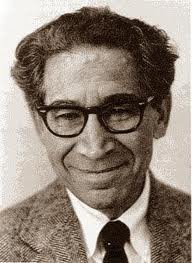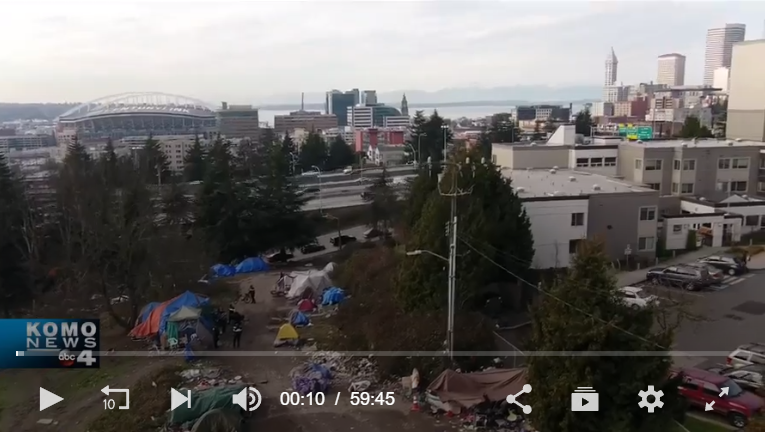
Flipping channels today on CNN, MSNBC and elsewhere I’m reminded of a famous book in social psychology.
Social Psychologist Leon Festinger, the same researcher who coined “cognitive dissonance,” released a fascinating book in 1956 called When Prophecy Fails.
When prophecies fail, the most fervent believers often double-down on their original beliefs, asserting that their very actions and diligence were precisely what prevented the dire prophecy itself. That is, bad things would have come true had they not acted.
It began when Festinger stumbled on a story in his local newspaper headlined “Prophecy from Planet a Clarion Call to City: Flee That Flood.” Budding Scientologist Dorothy Martin of Oak Park, IL typed out a dire prediction: a devastating flood would arrive just before dawn on December 21st, 1954 and consume the earth. (In Festinger’s subsequent book, Dorothy Martin was given the alias Marian Keech.)
A small but fervent apocalyptic cult formed around Keech’s prophecy.
Dozens of people believed. They gave away worldly possessions, left jobs, dropped out of college, even left spouses. In so doing, their own actions cemented their certainty and demonstrated their commitment to the prophecy. They reinforced one another.
Yet December 21st, 1954 came and went uneventfully. The prophecy never happened. So what became of those who believed so fervently in the prophecy? It turns out most of them believed even more strongly that they were right. But how?
About 4AM that morning, their leader told them at they had been spared because of the “force of Good and light” that the group members themselves had spread. And because of this, most of them ended up believing in the cult even more fervently.
In the book, Festinger and his associates recount how they had inflitrated Keech’s group, and they provided this sequence of events:
- Before December 20. The group shunned publicity. Interviews are given only grudgingly.
- December 20. The group expects a visitor from outer space to call upon them at midnight and to escort them to a waiting spacecraft. As instructed, the group goes to great lengths to remove all metallic items from their persons. As midnight approaches, zippers, bra straps, and other objects are discarded. The group waits.
- 12:05 am, December 21. No visitor. Someone in the group notices that another clock in the room shows 11:55. The group agrees that it is not yet midnight.
- 12:10 am. The second clock strikes midnight. Still no visitor. The group sits in stunned silence. The cataclysm itself is no more than seven hours away.
- 4:00 am. The group has been sitting in stunned silence. A few attempts at finding explanations have failed. Keech begins to cry.
- 4:45 am. Another message by “automatic writing” is sent to Keech. It states, in effect, that the God of Earth has decided to spare the planet from destruction. The cataclysm has been called off: “The little group, sitting all night long, had spread so much light that God had saved the world from destruction.”
- Afternoon, December 21. Newspapers are called; interviews are sought. In a reversal of its previous distaste for publicity, the group begins an urgent campaign to spread its message to as broad an audience as possible.
(above bullets from Wikipedia, https://en.wikipedia.org/wiki/When_Prophecy_Fails)
Here’s the counter-intuitive thing: After the predicted Apocalypse was disproven, most of the believers became more fervent in their belief that Keech was a prophet. A new justification had taken hold among the true believers: the prophecy didn’t come true because those who fervently believed, simply by the strength of their belief, were able to hold off disaster.
Festinger stated that five conditions must be present if someone is to become a more fervent believer after a disconfirmation:
- A belief must be held with deep conviction and it must have some relevance to action, that is, to what the believer does or how he or she behaves.
- The person holding the belief must have committed himself to it; that is, for the sake of his belief, he must have taken some important action that is difficult to undo. In general, the more important such actions are, and the more difficult they are to undo, the greater is the individual’s commitment to the belief.
- The belief must be sufficiently specific and sufficiently concerned with the real world so that events may unequivocally refute the belief.
- Such undeniable disconfirmatory evidence must occur and must be recognized by the individual holding the belief.
- The individual believer must have social support. It is unlikely that one isolated believer could withstand the kind of disconfirming evidence that has been specified. If, however, the believer is a member of a group of convinced persons who can support one another, the belief may be maintained and the believers may attempt to proselytize or persuade nonmembers that the belief is correct.
It will be interesting to watch what happens in the wake of the Mueller investigation whether people (appropriately) move on to other areas of concern or whether they seek to confirm that their actions actually prevented that which they thought would happen.

